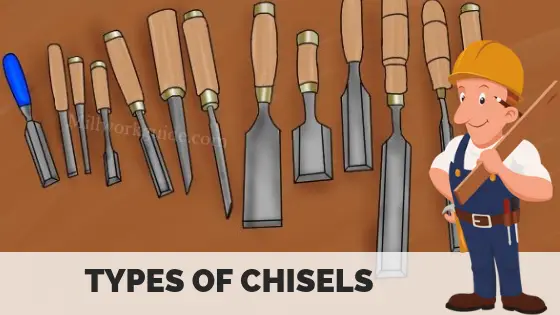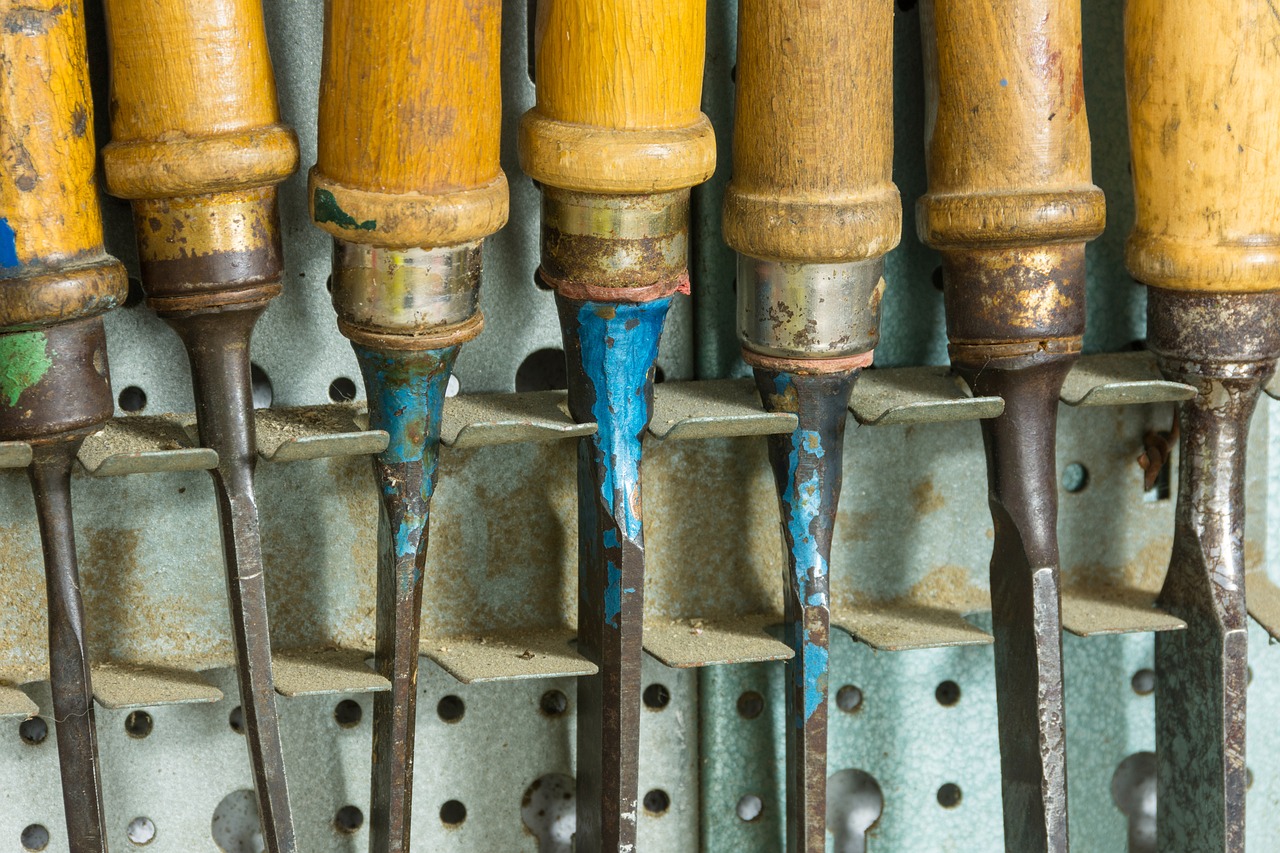Welcome to our article about all the different types of chisels and their uses! If you’re a carpenter, millworker, builder, stone mason or even just a beginner wood worker, you’ll find a wealth of useful knowledge about chisels below. Let’s get started!
Contents
Best Chisels for Woodworking 2024 – Introduction
Technology has advanced and evolved rapidly in the last few years, making our lifestyles easier and easier. However, in this technologically driven world, handcrafted work and hand tools have not lost their value or application.
Chisels in today’s world have not been replaced by technology, and are still a very relevant and useful tool.
The word Chisel is derived from a Latin Castellum, and an old French word cisel, meaning a tool used for cutting and scraping.
The chisel is a protracted blade hand tool with a reclined cutting edge and a handle which is hit with a hammer or a mallet. It is used to cut, scrape or shape wood, stone, or metal.
Various types of chisels are made of metal or wood with a sharp edge on it.
They were used in ancient Greece and Rome to craft classical antiquity, and were usually made of iron.
But not all the chisels are made the same way, or with the material. Chisels come in different sizes, with different types of blades and handles.
So with that said, let’s get into the most common types of chisels and their uses!

Chisels and Their Uses
Bevel-Edged Chisels
Bevel-Edged Chisels are not too short or too long, and come with an undercut which makes them easy to push into corners. They are the most common and useful chisel you will find in a hardware store. They are very easy to hold, are beveled on the sides (to give maximum access to dovetails), and can be sharpened easily. Bench chisels and Firmer chisels can be included under Bevel-edged chisels, as long as they have beveled side-edges.
Firmer Chisels are usually given tang-style wooden handles with a band on the top as well as the bottom to reduce the splitting process while working. On the other hand, Bench chisels are a much shorter chisel and are equipped with a socket handle and a hoop at the top to resist any kind of splinters. Bench chisels are given equal 5’’ blade and 5’’ handle for efficient and smooth working.
Uses
- Bevel edged chisels are used for acute angles and cutting
Firmer Chisels
It is believed that the word originated from a French verb “former”, which means to shape, or, to form. Firmer Chisels are defined with a rectangular cross-section of a thick blade, making them stronger. These can be easily used for tougher, and heavier work. Firmer Chisels are also known as “all wood purpose chisels”. The blade of this type of chisel is flat on the lateral sides, and is generally about 4-5 inches long approximately. The material used to make the handle of Firmer Chisels is mostly plastic, or of hardwood to able to take up the strong beating of the mallet, as it will be used for heavier work.
Uses
- Firmer Chisels are best used for heavy wood-working work.
Paring Chisel
A Paring Chisel is a long, but thin chisels which are beveled sideways (which helps to smooth the surface), and are easy to be pushed sideways. It helps in cleaning up the joint, and for a perfectly accurate fit. Furthermore, the cutting edges of these chisels can be used to accommodate cuts up to 15 degrees. These chisels are given tang-handles, and are not to struck by mallets, as they have tin blades, and very flexible. Under Paring Chisel, comes Fishtail Paring Chisel, with a narrower shaft, than the blade, which allows trimming of wood at almost all places
Uses
- For sliding cuts up to 15 Degree.
- For smooth, and finishing work.
Mortising Chisels
Mortising Chisels are very thick, as well as heavy, given with huge bolsters, and oval beech, or oak handles to able to take the abuse of heavy pounding. They are available in common size of 1/4 and 3/8, which will help mortises all kinds of sizes accordingly. The strength of Mortising chisel can be decided through the overall glue surface. And, the long chisels help in levering out the waste material, and give a smooth finishing.
Uses
- Mostly used for size mortising of various thickness, and width.
Wood Chisels
Wood or wooden chisels are equipped a metal blade, and wooden handle. They are available in various sizes, for different types of uses and workload.
Uses
- It can be used to sharpen, taper, and clean wood pieces.
Masonry Chisels
Masonry Chisel is a different kind of chisel from all the chisels, we have talked about. These chisels not only work on woods, but also on all kinds of stone, bricks, concrete, and other hard material.
Uses
- Helps in designing and working on stones and bricks.
Concrete Chisels
Like, many other kinds of chisels, these chisels are not easy to use, and can only be used by professionals. It comes with a sharp pointy tip, rather than a sharp edge because it has to cut through the concrete, not shape, or taper it. And, it also helps in demolishing the concrete surface.
Uses
- To cut through concrete, and demolish it.
Cold Chisel
Cold Chisel, and is tempered with steel, to cut “cold” metals, and are used to give a smooth finish in a short time. It is a chisel that is completely made of metal, and are used to work on heavy metals. Moreover, the cold chisels can cut through anything smoother than it, and helps in repairing
Uses
- Helps in cutting heavy-metal.
- Removing rusted bolts and nuts.
Cape Chisel
Like Cold Chisels, Cape chisel can also cut things which are softer than them. But a cape chisel is made completely of metal, but has a long taper on the top of the blade, with the narrowing edges. They are very useful for making tiny detailing on metals.
Uses
- To give attention to detail.
- To cut horizontal scrapes on metals.
Carved Chisel
Carved Chisel can be further classified into two- one with a curved but with a straight gouge, and second with a straight blade, but curved gouge. The curved chisels are used for intricate designing, and sculpting.
Uses
- To provide shape to complex wooden pieces.
Butt Chisel
Butt Chisels are short, slanted on the sides, and have a straight edge for crafting joints. Keep in mind, that you don’t confuse butt chisels with firmer, or bench chisels.
Uses
- To install butts and hinges.
Dovetails Chisel
Dovetails chisels are very commonly found and used chisels by professional woodworkers. Dovetails chisels come with a long thin blade, which has been beveled edges along with it.
hey usually come with a long and thin blade, which has beveled edges along with it.
Uses
- To finish the dovetails joint.
- For sharpening, and shaping

About The Author: Hi There! I’m Dave. I’m a certified millworker and carpenter, and have been working in the industry for over 10 years. I created this website to pass on my knowledge so that other enthusiasts, no matter what their skill level, can enjoy the craft as much as I do. I hope you enjoy!

